Phil Stutz's Tools for Life
"You better not come in here and dump all your shit on me." Phil Stutz
Hello everyone,
A couple of days ago, I was sitting on the bed of my Bavarian vacation rental. I was staring at the blank walls, thoughts racing, sheep bleating in a nearby stable. I’d just snapped at my mother, and I could feel the tension all over my body. Worse, I felt the urge to keep arguing. Part of me wanted to be angry and start a fight.
I was exhausted from a week of non-stop family time. Tired of continuous conversations. I missed my routines and having my own space. And when my Mum, a wonderful woman, interrupted me during an emotional conversation, she triggered some old childhood circuits.
There I was, moments later. Still steaming and confused about my reaction.

I’m not always a practical person but in this instant, I knew that any time spent in my state of negativity was wasted. Unfortunately, part of me was holding on to the feeling of anger. It felt justified and there was resistance to letting it go.
I’ve struggled with holding on to petty feelings before. But this time I had a fancy new term: my mind was entering ‘the maze’.
Most wrongs that people commit cause no lasting damage; if you were to let go of the initial hurt, you could go on with life immediately. But you don’t. You obsess about what was done to you in the past. As a result, you turn your back on your own future.
When you’re in the Maze, life passes you by. — Phil Stutz
Better yet: I had a tool to help me. It’s called ‘active love’ and if you have a moment, I want to invite you to read the instructions below and try it out. I’m sure there’s someone in your life who triggers feelings of anger or resentment.
Imagine that you’re surrounded by a warm, liquid light that is infinitely loving. Feel your heart expand far beyond you to become one with this love. As you bring your heart back to normal size, this infinite energy concentrates itself inside your chest. It’s an unstoppably loving force that wants to give itself away.
Focus on the person who’s triggered your anger. Visualize their presence. Send all the love in your chest directly to them; hold nothing back. It’s like completely expelling a deep breath.
Follow the love as it leaves your chest. When it enters the other person at their solar plexus, don’t just watch. Feel it enter. This will give you the sense you’re completely at one with them.
Now relax— you’ll feel yourself again surrounded by infinite love, which will return to you all the energy you gave away. You’ll feel filled up and at peace. — The Tools, Phil Stutz, Barry Michels
Active Love is one of many short visualization and mindfulness techniques called “the Tools” and developed by psychiatrists Phil Stutz and Barry Michels. I first heard about them years ago through my friend Alix who recommended their two books (The Tools and Coming Alive). At the time, the book ended up on my shelf. But I rediscovered the ideas a month ago, when I watched Dr. Stutz play himself in Stutz, a Netflix film made by his patient, comedian and actor Jonah Hill.
Stutz is a heartwarming film that uses Hill and Stutz’s personal journeys as the canvas to lay out Stutz’s philosophy and Tools. It is also unique in exploring the relationship between therapist and patient. “This is either going to be the best or worst documentary,” Stutz jokes about the messy creative process of making the film. “Probably both.”
It’s particularly impactful because Stutz, the authority figure, explores his own struggles. Stutz calls failure a connector: “Shame and embarrassment,” he says, “are the glue that holds the universe together.”
You can't move forward without being vulnerable.
By admitting to their weaknesses, two people can take a conversation and relationship to another level.
These moments also help dispel the fantasy that the teacher transcended the struggles inherent in human nature. “One of the things that this movie is accomplishing for me,” Hill explains, “is that I used to think that the people I look up to are absolved of the problems that I have.” When Stutz breaks out in laughter Hill adds: “I understand. It's absurd. It really is absurd. You're laughing because it's absurd.”
It may be an absurd idea but it’s an easy trap to fall into. We rarely see people in authority open up and admit to their shortcomings. The world of celebrity, gurudom, and social media requires an airbrushed appearance. Vulnerability becomes, please excuse the pun, a tool, and is carefully used to create the commercially valuable air of authenticity.
Stutz is not your average therapist. Besides offering his own philosophy, he spices up the seriousness of the work with his dry humor. He greets Hill, his patient, with an ironic “you better not come in here and dump all your shit on me.”
Stutz and Hill’s great chemistry make the film fun and highlight how humor can create its own challenge in doing emotional work. Both Hill and Stutz occasionally break and release tension. In a difficult moment for Stutz, Hill prods him to stay on topic, admitting that he shares “the same disease, which is to avoid emotion by making jokes.” It’s one of many moments that stuck with me.
The challenge for Hill, Stutz, and all of us is to not run from discomfort. To observe it, feel it, learn from it, and let it go. To neither impulsively act on it nor give into the urge to escape.
And to return to a state of engagement, openness, and love. To not get lost in the maze and waste our lives. Stutz’s ideas, a few of which I’ll share below, can help with that.
Why did I write about The Tools?
What I appreciate about Stutz’s approach is that it is deeply pragmatic. The Tools, all of which you can find here, were born out of his frustration with the limitations of talk therapy. His patients’ lack of success in changing their lives left Stutz feeling helpless. He felt an urge to find something that would help them better navigate their days.
Or as Hill put it:
Traditional therapy, you're paying this person, and you save all of your problems for them. And they just listen. And your friends who are idiots give you advice. Unsolicited. And you want your friends just to listen and you want your therapist to give you advice.
The tools are very practical. They are not meant to replace therapy or other practices but can be practiced immediately to tackle a challenging moment. Thus they offer to restore a sense of agency. They require awareness of one’s thoughts and emotions to watch for clues (feelings of anger and resentment, jealousy, depression, despair, hurt, etc.), a valuable quality to cultivate.
The tools are supposed to help us tackle the present and change our emotional and mental state. Because, as Stutz notes, “the worst thing is to argue with thoughts”.
The Tools I’ve started using most frequently are the grateful flow, active love, inner authority/shadow, the black sun, and reversal of desire. You may recognize many of the underlying ideas from other traditions. Active love is similar to metta. Jeopardy invokes the stoic memento mori. And practicing gratitude is lindy.
If there is one downside to the tools, it is the need for visualization. The ability to picture things internally differs from person to person; some people can’t do it at all. One exercise involves imagining a vortex of twelve suns circling above one’s head. I can barely visualize a flickering picture. Nevertheless, the change in inner state can still be achieved. I believe it is based on the shift in focus and not on specific images.
A unifying theme among the tools is to tap into what Stutz calls “higher powers,” a feeling of connection to a large, unknowable, but fundamentally benevolent universe. In that sense his philosophy is spiritual. I don’t think one has to subscribe to his beliefs to use or benefit from the Tools.
In addition to the Tools, I found several aspects of Stutz’s philosophy very useful and intuitive.
Part X and The Maze
Stutz calls the “judgmental, anti-social” part within us Part X. Part X represents the resistance and fear that block our growth, the resentment that leads us to disconnection and isolation. Part X is our inner negativity, the “voice of impossibility.”
Do you want to be right, or do you want to create something?
Part X wants to be right. Part X is also the voice that leads us into the maze, the moments (sometimes entire lives) spent in resentment, self-pity, and disconnection. When we’re stuck in the maze, our life is on hold and, ultimately, wasted. “Time is fleeting,” Stutz comments. And “we don't have time for that bullshit.”
Part X is also the force that keeps us from using the Tools. As we venture deeper into the maze, we lose sight of the people and activities that make us feel better. The light of our life force dims. Negative mental chatter keeps us in the trap.
The Life Force
Stutz: Here's the classic thing. Guy’s depressed. He comes into my office, and he says, I know I should be disciplined. I know I'm lazy. But if I only knew what I was supposed to be doing, what my mission was in life. But I don't know what I'm supposed to be doing. So I'm just gonna be lazy and do nothing. The answer is you can always work on your life force.
The only way to find out what you should be doing is to activate your life force. Because your life force is the only part of you that actually is capable of dying in your life.
I love this concept and I used to get trapped in the “if only I knew my mission” loop all the time. “If only I had the clear sense of mission and focus of a David Senra” — stop right there and instead take action.
Instead of trying to think your way to a sense of purpose and mission, work on what you can change and improve right now. Trust that any clarity or sense of mission needed will emerge.
If you’re lost don't try to figure it out. Let it go and work on your life force first. It's about passion, increasing your life force so you can find out what you're really passionate about. But step one is to be passionate about connecting to your own life force. Anybody can do that.
Stutz’s Life Force pyramid has three levels: your relationship with your physical body, followed by your relationship with other people, and finally your relationship with yourself.
Stutz on the relationship to your body:
All you got to do is get your body working better. It always works. The classic thing is exercising. Diet is another one. And sleeping. That’s probably 85% [of the improvement in the beginning of therapy.]
Relationship to others:
When people get depressed it's not that they end their relationships. It isn't a ship disappearing over the horizon. They slowly get pulled back away from their life. And relationships are like handholds to let yourself get pulled back into life.
The key is you have to take the initiative. It doesn't matter who [you meet with], it will affect you anyway in a positive way. That person represents the whole human race, it’s symbolic.
Relationship to yourself:
The best way to say it is to get yourself in a relationship with your unconscious. Nobody knows what's in their unconscious unless they activate it. And one trick is writing. It’s really a magical thing. Writing is like a mirror that reflects what's going on in your unconscious. Things will come out, if you write, that you didn't know. You enhance your relationship with yourself by writing something simple.
The idea of putting action, momentum, and process over an idealized sense of purpose is related to another one of his concepts, which he calls:
The Fantasy
Stutz believes that every one of us has a fantasy. This could be money, fame, a degree or skill, a relationship, children, living in a certain place. We fantasize that if only we reach this magic place, it will relieve us from the struggles that have defined us.
For me this has primarily been money. “If only I am rich, everything else will fall into place.” I can both understand how this statement is ridiculous and yet feel that somehow it might still be true. And start daydreaming.
Stutz calls this the realm of illusion. It is a static image, a snapshot of an idealized life, without movement or depth. Just a happy picture that lacks what Stutz calls the “three aspects of reality”:
The pain will never go away. Uncertainty will never go away. And there's no getting away from the need for constant work. Everybody has to live like that. No matter what.
What will make you happy is the process. Learn how to deal with those three things.
Happiness, Stutz believes, is accepting that we will never figure everything out. Happiness is acceptance of reality and its never-ending trials.
To prevent the flight into the realm of illusion, Stutz advises to picture the fantasy, to make it as visible as possible and truly feel its emotional appeal. And then to crush it. To realize it will never be reality. And to return to working on your life force (a related concept is the Black Sun which I’d also recommend trying out).
Forget about the fantasy. Stay in the present. Work on your life force. Use the Tools.
Until next time. Thank you for reading.
Frederik




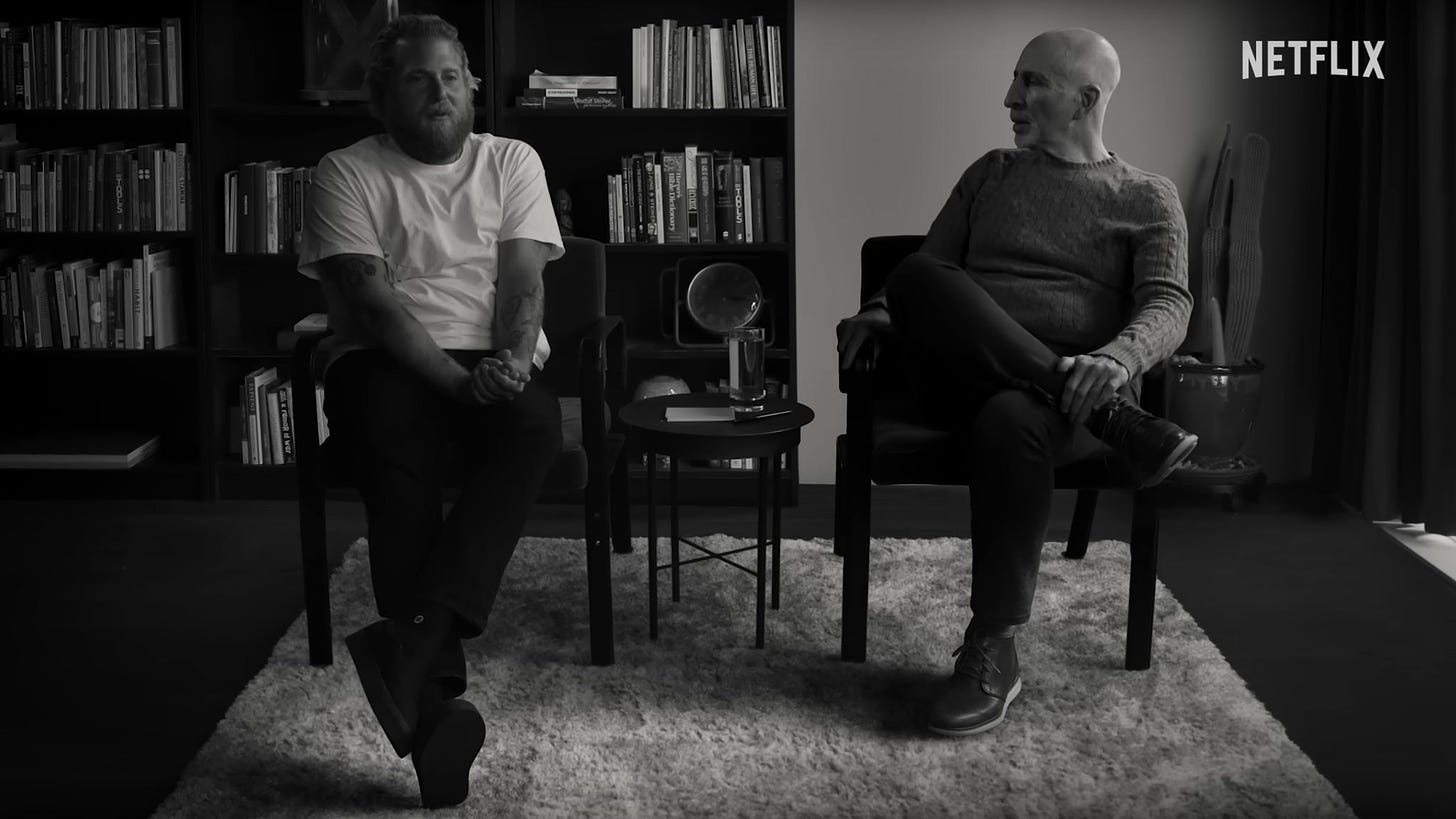
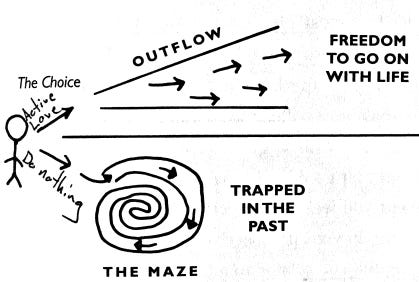
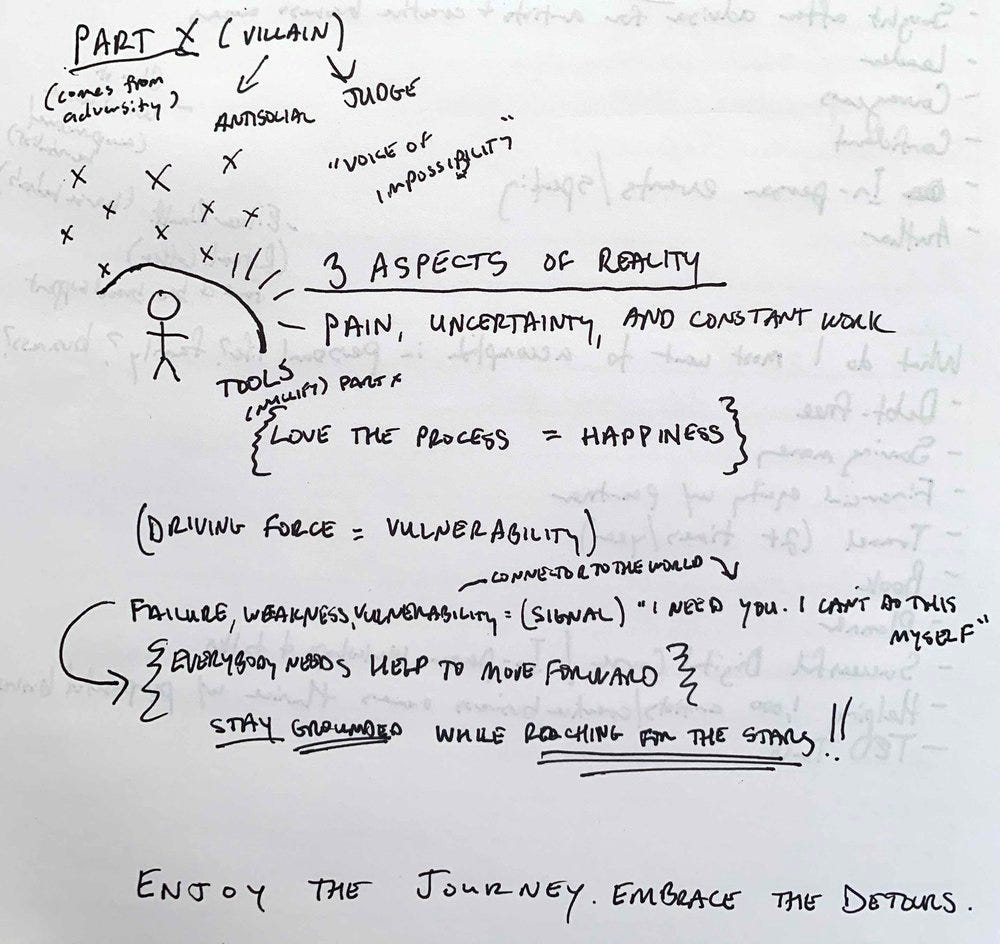
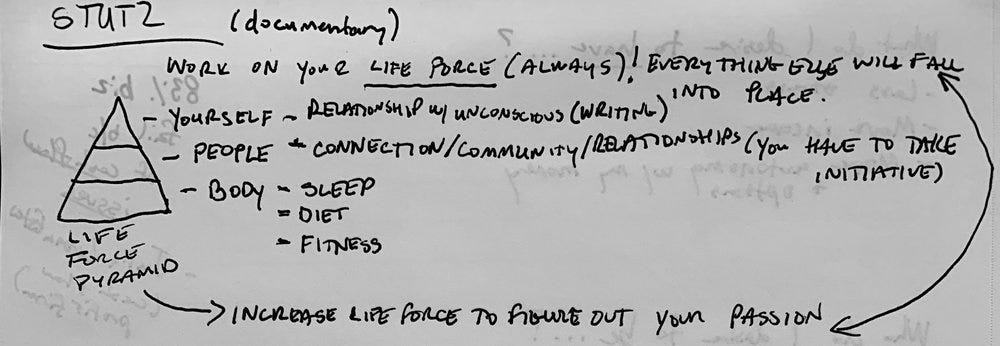
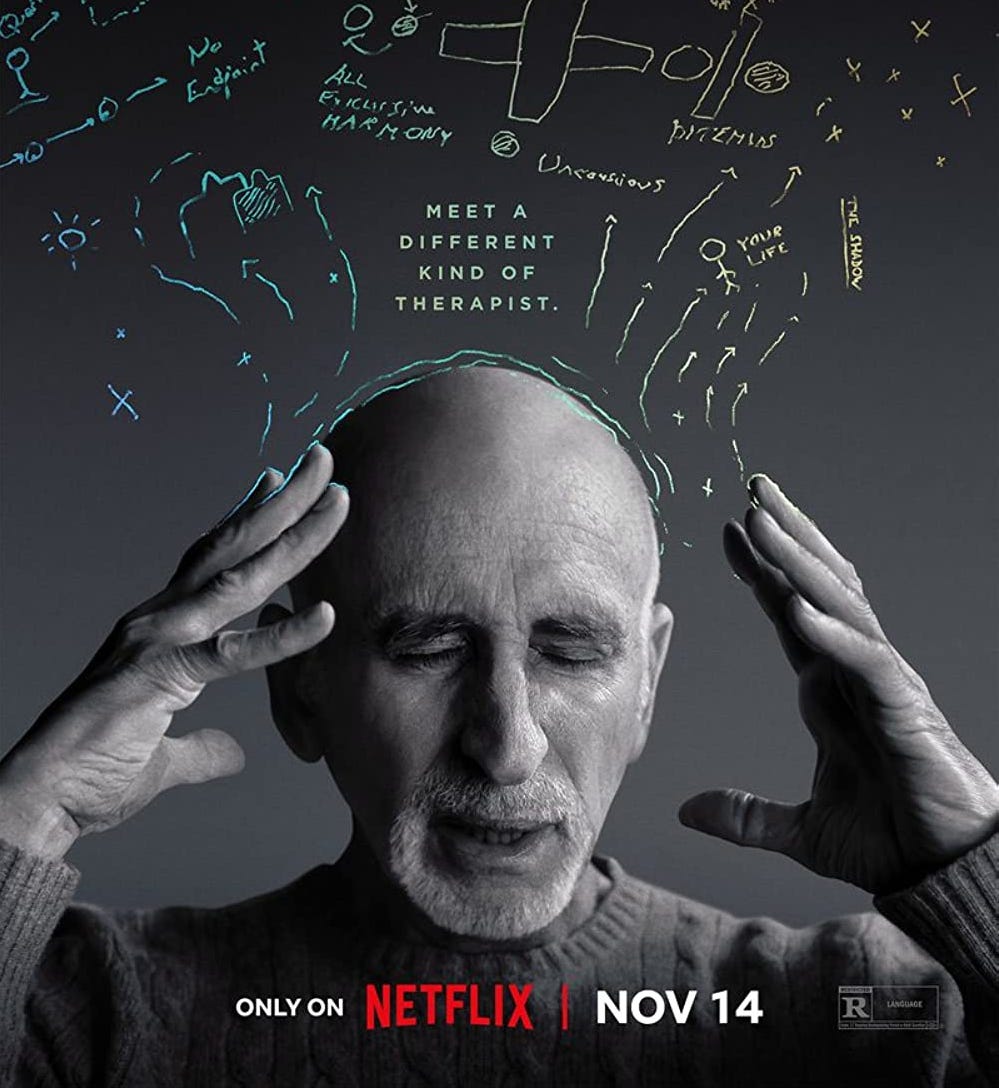
Fantastic memo sir, greatly enjoyed.
props to this effort. for all the immersion towards your personal
integrity for the living effort -- i took some measure for my personal
journey. 12 years ago i looked at the living life effort as a problem or
series of problems to be solved. the climbing life transforming my
universal thought process - especially the climbing form called "bouldering".
this new action effort took me well away from the center of the curve
& put me square to myself. the only unique trait becoming necessary
i realized, was the Life Year living effort beginning with the birthday.
gripping this reality pushed me to deal with all these Stutz things so eloquently.
and it required work. but the work became part of my individuality to making
the effort my own. and thus; also the result - my own. i call it the building of me.